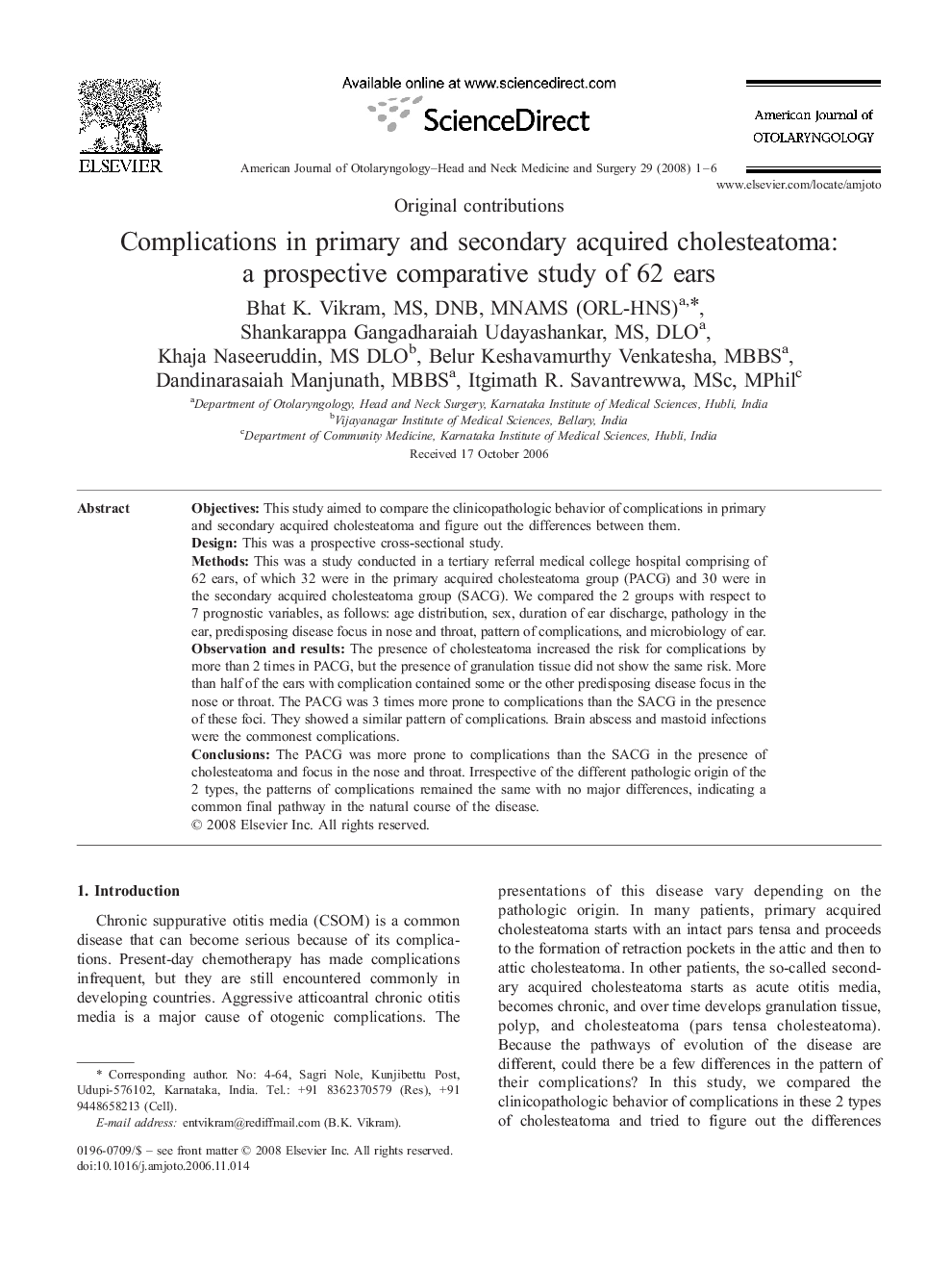| Article ID | Journal | Published Year | Pages | File Type |
|---|---|---|---|---|
| 4104474 | American Journal of Otolaryngology | 2008 | 6 Pages |
ObjectivesThis study aimed to compare the clinicopathologic behavior of complications in primary and secondary acquired cholesteatoma and figure out the differences between them.DesignThis was a prospective cross-sectional study.MethodsThis was a study conducted in a tertiary referral medical college hospital comprising of 62 ears, of which 32 were in the primary acquired cholesteatoma group (PACG) and 30 were in the secondary acquired cholesteatoma group (SACG). We compared the 2 groups with respect to 7 prognostic variables, as follows: age distribution, sex, duration of ear discharge, pathology in the ear, predisposing disease focus in nose and throat, pattern of complications, and microbiology of ear.Observation and resultsThe presence of cholesteatoma increased the risk for complications by more than 2 times in PACG, but the presence of granulation tissue did not show the same risk. More than half of the ears with complication contained some or the other predisposing disease focus in the nose or throat. The PACG was 3 times more prone to complications than the SACG in the presence of these foci. They showed a similar pattern of complications. Brain abscess and mastoid infections were the commonest complications.ConclusionsThe PACG was more prone to complications than the SACG in the presence of cholesteatoma and focus in the nose and throat. Irrespective of the different pathologic origin of the 2 types, the patterns of complications remained the same with no major differences, indicating a common final pathway in the natural course of the disease.
